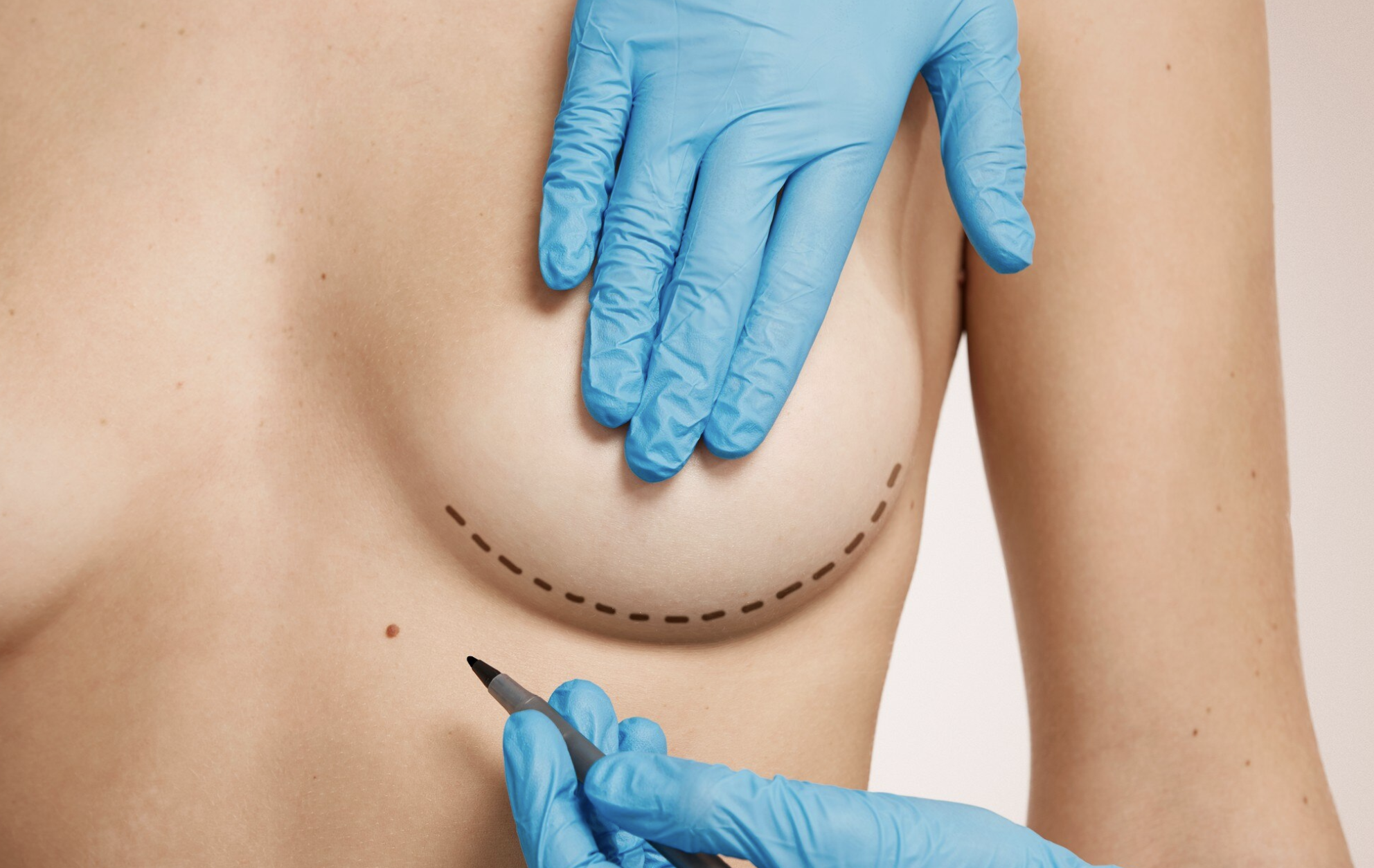Lumps and Bumps After Lipo: Are They Normal? A Surgeon's Guide
Jun-15-2025

ou’ve taken the exciting step of contouring your body with liposuction. The initial recovery is underway, but as the swelling starts to change, you notice something you weren’t expecting: lumps, bumps, or uneven firmness under your skin.
Before your mind starts to race, take a deep breath. In the vast majority of cases, feeling some lumps and bumps after liposuction is not only normal but an expected part of the healing process.
At Luxe Aesthetic Surgery, we believe an informed patient is an empowered patient. This guide, written by our expert team, will walk you through why these bumps occur, how to tell the difference between normal healing and a potential concern, and what you can do to achieve the smoothest, most beautiful result.
Why Do Lumps and Bumps Form After Liposuction?
Understanding the "why" can immediately reduce anxiety. Your body is undergoing a significant healing process. The lumps you feel are typically caused by one of three things:
-
Post-Operative Swelling (Edema): The primary cause. The tunnels created by the liposuction cannula (the thin tube used to remove fat) fill with fluid as your body’s natural healing response kicks in. This fluid can collect and feel lumpy or firm. This is temporary.
-
Localized Fluid Collection (Seromas & Hematomas): Sometimes, fluid can gather in a specific pocket. A seroma is a collection of clear serous fluid, while a hematoma is a collection of blood. These often feel like small, fluid-filled balloons under the skin. While small ones can resolve on their own, larger ones may need to be drained by your surgeon.
-
Healing Tissue (Fibrosis): As your body heals, it creates scar tissue. This is a normal part of any recovery. Sometimes, this scar tissue can feel firm or nodular. This process, known as fibrosis, typically softens and resolves over several months with proper aftercare.
Comparison: Normal Healing vs. A Cause for Concern
Knowing what to look for is key. Use this comparison table to guide your understanding.
| Feature | Normal Lumps & Bumps (Expected) | Concerning Lumps & Bumps (Call Your Surgeon) |
| Pain Level | Mild to moderate tenderness that improves over time. Discomfort, not sharp pain. | Severe, sharp, or significantly worsening pain. |
| Appearance | No significant skin discoloration, other than resolving bruises. | Bright red, hot to the touch, or accompanied by shiny, taut skin. |
| Size & Feel | Feel like small, firm nodules or generalized firmness that softens over weeks. | A large, rapidly growing lump, or one that feels like a hard, fixed marble. |
| Timing | Appears in the first few days or weeks and gradually improves. | Appears suddenly after several weeks of smooth recovery or does not improve after 3-4 months. |
| Other Symptoms | None. You generally feel well and are recovering as expected. | Accompanied by fever, chills, or drainage/pus from an incision site. |
The bottom line: Your body’s healing timeline is unique. However, any signs of infection (fever, redness, heat, pus) or a lump that is causing you severe pain warrant an immediate call to our office.
The Luxe Approach to a Smooth Result
At Luxe Aesthetic Surgery, minimizing post-operative issues like severe lumpiness is central to our technique and aftercare protocol.
-
Advanced Technology: We utilize techniques like VASERlipo®, which uses ultrasound energy to liquefy fat before removal. This is a gentler process that can lead to less trauma, reduced swelling, and a smoother initial recovery.
-
Meticulous Technique: [Dr. Surgeon's Name]'s experience in body contouring ensures fat is removed evenly, creating smooth transitions and minimizing the risk of contour irregularities.
-
Comprehensive Aftercare: Our protocol is designed for optimal healing. We provide detailed instructions on compression, massage, and activity to guide you every step of the way.
Your Role in a Smooth Recovery: 5 Steps to Success
You are a partner in your recovery. Following these steps can significantly reduce the severity and duration of post-lipo lumps.
-
Wear Your Compression Garment Religiously: This is the single most important step. Compression reduces swelling, prevents fluid from accumulating, and helps your skin re-drape smoothly to its new contour.
-
Embrace Lymphatic Massage: Once cleared by your surgeon, manual lymphatic drainage (MLD) massage by a certified therapist is a game-changer. It helps flush out excess fluid and can soften fibrous tissue.
-
Start Light Movement: Walking and gentle movement encourage circulation, which is crucial for reducing swelling and promoting healing.
-
Stay Hydrated & Eat Well: A healthy diet rich in protein and low in sodium helps your body build new tissue and minimize water retention.
-
Be Patient: This is a marathon, not a sprint. The final, smooth results of liposuction can take 6-12 months to fully appear as all residual swelling and firmness resolves.
Frequently Asked Questions (FAQ) About Lumps After Lipo
Here are answers to the 15 most common questions we receive from our patients.
-
When do lumps after lipo typically appear?
They usually become noticeable within the first 1-3 weeks after surgery, as the initial, more generalized swelling begins to subside. -
How long do lumps and bumps last after liposuction?
Most lumps will soften and resolve within 3 to 6 months. Minor firmness can persist for up to a year as the deep tissues complete their healing cycle. -
Are the lumps supposed to be painful?
They can be tender to the touch, similar to a deep bruise, especially in the first few weeks. The pain should be manageable and gradually decrease, not worsen. -
What does normal post-lipo lumpiness feel like?
It can range from a general feeling of hardness under the skin to small, pea-sized or sausage-shaped firm areas in the treated regions. -
Can I massage the lumps myself?
Yes, once your surgeon gives you the okay. Gentle, circular massage can help soften fibrous areas, but always follow the specific instructions provided by your medical team to avoid causing trauma. -
Is this lump I'm feeling fibrosis?
If the lump is firm, not fluid-filled, and appears a few weeks into recovery, it is likely fibrosis—the body's normal scar tissue formation. This is a standard part of healing that softens over time. -
How do I know if I have a seroma?
A seroma often feels like a distinct, fluid-filled pocket that can sometimes jiggle or feel "squishy," like a water balloon under the skin. If you suspect a seroma, contact your surgeon, as it may need to be drained. -
Will the lumps go away on their own?
Yes, the vast majority of post-operative lumps and bumps will resolve on their own with time and adherence to aftercare instructions like wearing your compression garment. -
How much does the compression garment really help with lumps?
It is essential. The garment provides constant, even pressure that prevents fluid from pooling, reduces overall swelling, and helps the healing tissues lay flat, which is critical for preventing and resolving lumps. -
Can I exercise if I have lumps?
You should follow your surgeon's overall exercise timeline. Light activity like walking is encouraged early on. Strenuous exercise should be avoided until you are cleared, as it can increase swelling. -
Are lumps more common in certain body areas?
Yes, areas with denser tissue, like the abdomen and back, are often more prone to post-operative firmness and fibrosis than areas like the arms. -
What if my lumps are still there after 6 months?
While most lumps have resolved by this point, some residual firmness is not uncommon. If you have a distinct, hard, or painful lump after 6 months, schedule a follow-up appointment for a professional evaluation. -
Does VASER liposuction prevent lumps?
VASER's gentle fat emulsification can lead to less tissue trauma, which may result in less inflammation and swelling, potentially reducing the initial severity of lumpiness. However, all liposuction involves a healing process that can include temporary lumpiness. -
Can my diet affect the lumps?
Yes. A low-sodium diet can help reduce overall water retention and swelling. Staying well-hydrated by drinking plenty of water helps your lymphatic system flush out excess fluid more efficiently. -
When should I absolutely call my surgeon about a lump?
Call immediately if a lump is associated with: severe or escalating pain, redness, skin that is hot to the touch, fever, or drainage from an incision. These are signs of infection or a complication that requires prompt medical attention.
Your Partner in a Beautiful Result
Feeling lumps and bumps after liposuction can be unsettling, but it's almost always a temporary phase on the path to your final, beautiful contour. Patience and diligent aftercare are your most powerful tools.
If you ever feel uncertain or concerned during your recovery, please do not hesitate to contact us. Our commitment at Luxe Aesthetic Surgery extends far beyond the operating room.
Ready to learn more about achieving your ideal body contour? Schedule your private consultation with Dr. Haimesh Shah today.











Luxe Team